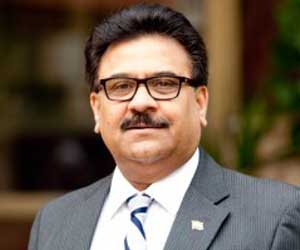A friend in need is a friend indeed. Only recently President Rouhani took a dig at their so called strategic partners and friends who failed to stand up to the bullying by the USA even during the pandemic that had affected Iran probably worst in the region. A country under severe sanctions hoped for a better understanding and empathy in the hope that the long haul on principles and predilections could legitimately see a hiatus when humanity was at stake. Rouhani lamented “Over the past months since the coronavirus arrived in our country no one came to our help and if the USA has a bit of humanity and brain it would have offered to lift the sanctions for a year because of the coronavirus”. He further added that Trump imposed new sanctions with maximum pressure tactics conveniently ignoring the US call in March to help Iran in its fight against the virus by Supreme leader Ali Khamenei calling them “charlatans and liars”. But this ire and disappointment was more targeted at its friends.
India and Iran relations, even though historic, strategic,civilizational and energy and connectivity oriented, have not been spared from the USA’s unilateral sanctions against Tehran. India in principle did not recognise the unilateral sanctions unless backed by the UN. But the geo-politics in the context of the hyper power has its own dynamic. Such situations also put India’s strategic autonomy and its international profiling and credibility at risk. Although initially US gave India some waivers to import the oil from Iran in the hope that Iran will return to renegotiate the JCPOA nuclear deal but the bilateral situation between them continued to become conflictual by the day nearly reaching highly volatile and dangerous levels of escalation in the wake of killing of Iranian General Qassem Soleimani in Iraq by a US drone strike on January 3 this year. But the good sense prevailed and a hot war was averted. Then the pandemic happened.
Meanwhile holding steady ground Iranians are hoping for a change in the US political dispensation so that the nuclear deal could be revived and sanctions are rolled back. Trump’s demarche at the UNSC to extend the arms embargo on Iran failed by a convincing margin especially as its locus standi in the matter was questionable given the fact that it had walked out of the deal it was trying to invoke.
Iran has a strategic importance for India providing access to Afghanistan bypassing Pakistan, Central Asia and through North South Transport Corridor (INSTC) to Russia and Europe. Chabahar port whose first phase has been developed by India is crucial for its security and connectivity as the Chinese outreach to Gwadar port in Pakistan, acquired under its BRI-CPEC project, materialises. Besides although Chabahar has been exempted from the US sanctions the progress has been slow. Meanwhile India has also sought this to be included in the INSTC in addition to Bandar Abbas. However , the pandemic and the sanctions as well as Sino-US –Iran rivalry and changing regional political dynamic created new equations as China and Iran decided to sign acomprehensive economic and security Agreement under which China might invest US$400 bn as part of infrastructure including energy related port developments. Long term supplies of hydrocarbons are part of the deal. As such Iran supports the BRI.
India’s reported delay in executing the Chabahar-Zahedan railway project and the Iranians deciding to go on their own gave rise to suspicion that a cornered Iran might tie up more closely with other US sanctioned countries like China, Russia and Pakistan to create a new geo-political pole which given the current stalemates in different theatres might undercut India’s strategic interests.
There has been no dearth of high level meetings and exchanges especially since the visit of PM Modi to Tehran in 2016 when a trilateral agreement was also signed with leaders of Iran and Afghanistan. This was further strengthened by the visit of President Rouhani in February, 2018 when the Joint Statement entitled “Towards Prosperity through greater Connectivity” brought the strategic collaboration and its expanse into focus. But India’s stoppage of oil imports from Iran from 11-12% to nearly zero, despite an infructuous visit by Foreign Minister Javad Zarif just before the Indian parliamentary elections, somewhat disappointed the Iranians even as they tried to understand India’s predicament. Whether there were other alternate ways to deflect the adverse impact of the sanctions is debatable. But national interest for each country is the most important and its contours keep being defined and fine-tuned with the changing global power equations.
Last week, on his way back from the SCO (Shanghai Cooperation Organisation) meeting in Moscow, Raj Nath Singh, Indian Defence Minister (RM) visited Tehran to discuss bilateral cooperation and regional situation with his Iranian counterpart General Amir Khatami. Iran is an Observer at the SCO. They expressed satisfaction at the outcome. Earlier in Moscow, RM had spoken about the precarious situation in the Gulf and urged for resolution of differences through dialogue based on mutual respect. The two countries also have a Defence Cooperation Agreement and even held naval exercises in the past and are close partners in counter terrorism let alone energy trade and Iran’s hold on the strategic Strait of Hormuz- a very important choke point for the energy security and maritime commerce perspective. Under normal circumstances there are wider possibilities of defence and security cooperation. However, the visit must have mollified the Iranian concerns and assured India’s continued interest and investment in the relationship.
A fast paced development in Afghanistan, as US withdraws and Taliban gains greater traction, the Indo-Iranian congruence and approaches ought to acquire greater salience. Likewise the Chinese changing gears in the region especially in the Persian Gulf will require a more robust strategy of diversified engagement.
Interestingly, this momentum has been followed by a visit by Dr S Jai Shankar, Indian External Affairs Minister (EAM) in less than a week when on September 9 he held a luncheon meeting with Iranian Foreign Minister enroute to Moscow. This has been an unusual frequency of interaction but extremely important in substance and semantics especially going forward. Zarif tweeted “pleased to host my Indian counterpart @DrSJaishankar in Tehran for talks today. Discussed expansion of bilateral relations and trade, and exchanged views on important regional issues. Our active engagement with our neighbourhood is our top priority”. Iran helped in evacuation of Indians while India rendered assistance with regard to Covid 19 in recent past.
EAM called the talks productive. Hitherto, India’s policy and practice of equity and equanimity in the region and elsewhere has been widely appreciated. But as the regional dynamic undergoes a major shift and next few months will decide the future course of the hyper power focus, India will have to steer the course to the best of her advantage by recreating the trust and erasing the doubts by underscoring that the rising power means what it implies. Iran would also like to engage more with India as we enter the UNSC as a non-permanent member. These interactions in the bilateral context might result in the meeting between the Principals at the SCO Summit for taking the relationship back to the right orbit.
(The paper is the author’s individual scholastic articulation. The author certifies that the article/paper is original in content, unpublished and it has not been submitted for publication/web upload elsewhere, and that the facts and figures quoted are duly referenced, as needed, and are believed to be correct). (The paper does not necessarily represent the organisational stance... More >>
Image Source: https://newsvibesofindia.com/wp-content/uploads/2020/09/page-1.jpg











Post new comment